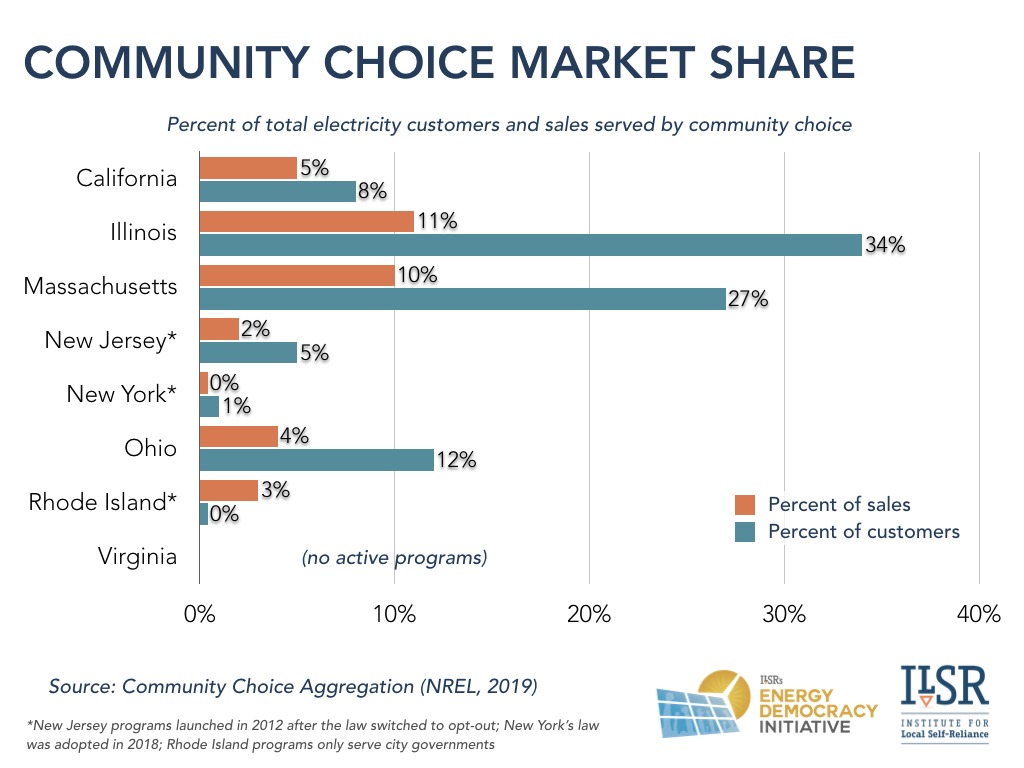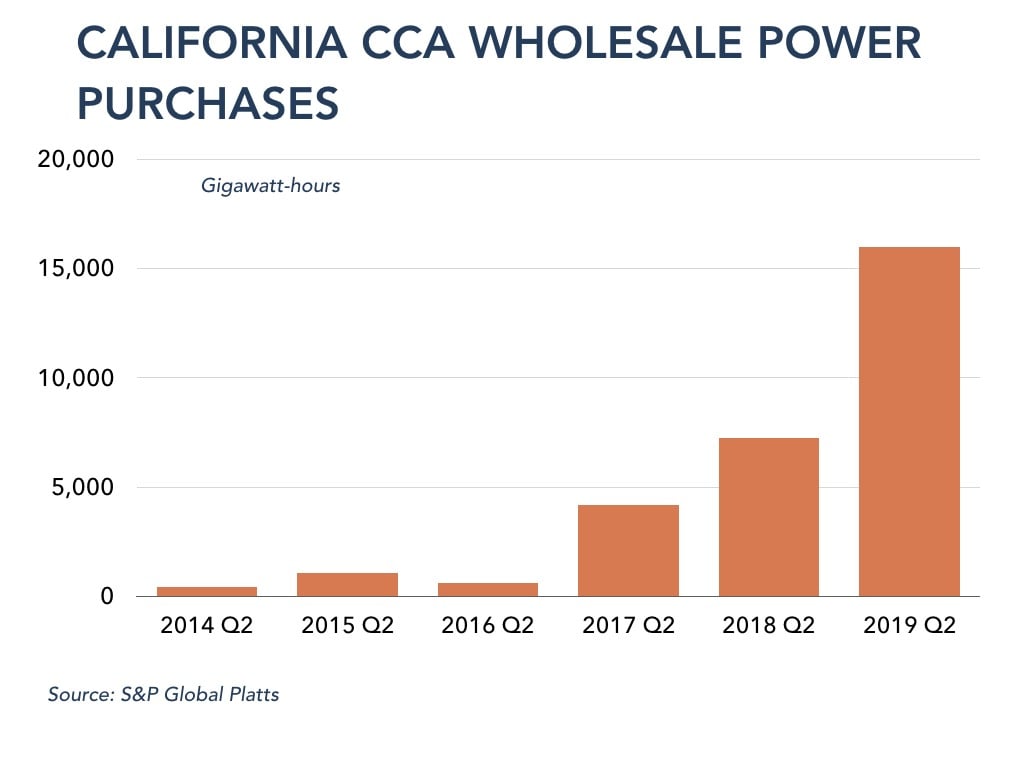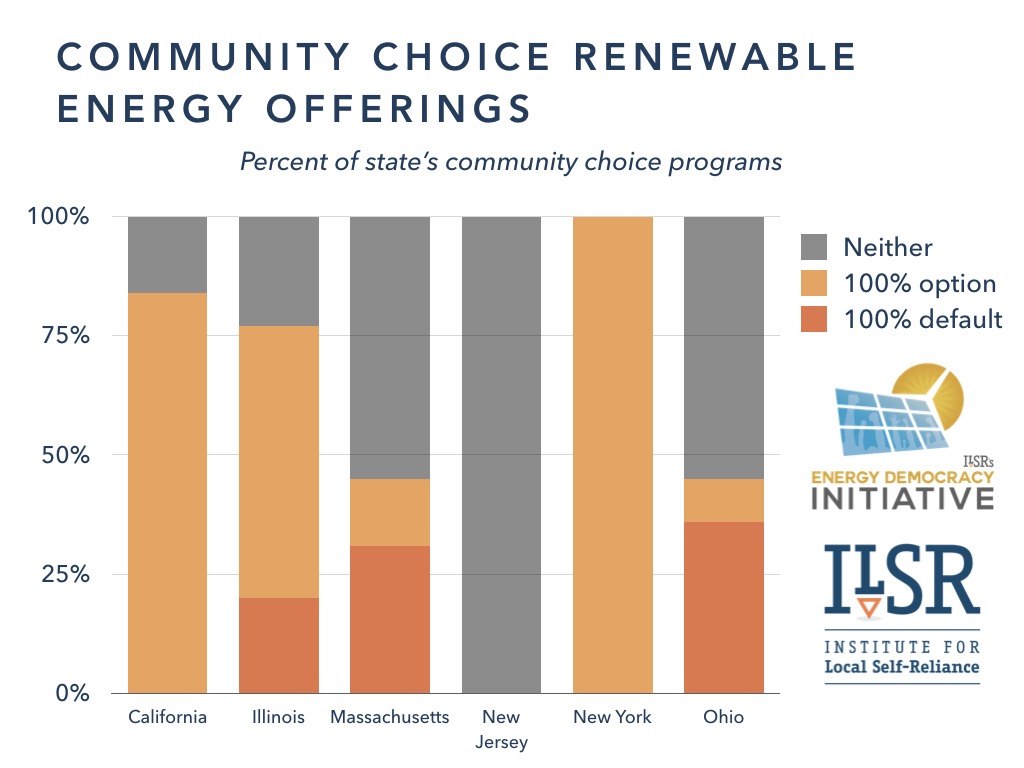Report: Community Choice Energy
Credit to Author: John Farrell| Date: Mon, 24 Feb 2020 19:05:57 +0000
Published on February 24th, 2020 | by John Farrell
February 24th, 2020 by John Farrell
Originally published at
More communities than ever want to exercise control over their energy systems. In 2016, Americans collectively spent $360 billion buying electricity. Most of the revenue accrued to the benefit of increasingly-large, investor-owned utilities. Inspired by the individuals who put solar on their roofs, cities, counties, and states want the option to take charge and more widely share the financial and economic benefits of the clean energy transition. It’s why an increasing number of states have allowed community choice energy.
Enabled by law in nine states, numerous cities are exercising their right to purchase energy on behalf of millions of electricity customers. Community choice simplifies the more widely available tool of a utility takeover by allowing communities to make energy supply decisions without buying the poles and wires of the existing electric utility. The following chart illustrates the market share of community choice programs by state (New Hampshire is not shown, since its policy was adopted in July 2019).
In three states, in particular, community choice is growing rapidly. In California, for example, the share of sales to electricity customers rose from 5% to 18% in the last year alone. In New York, nearly fifty municipalities have joined community choice programs in the past year. In Massachusetts, 150 communities have joined since 2015.
While many community choice programs have modest ambitions to lower energy costs through economies of scale, a growing number of programs have expanded their scope to include:
For example, the following chart shows that many community choice programs offer 100% renewable electricity by default or as an option.
In no state have community choice programs shown more ambition than in California, a complement to its rapid and expansive growth. This report explores several factors leading to California’s exceptional choice agencies and several ways it continues to push the limits of public power, including:
To read the rest, .
This article originally posted at ilsr.org. For timely updates, follow John Farrell on Twitter, our energy work on Facebook, or sign up to get the Energy Democracy weekly update.
![]() Follow CleanTechnica on Google News.
Follow CleanTechnica on Google News.
It will make you happy & help you live in peace for the rest of your life.
John Farrell directs the Democratic Energy program at ILSR and he focuses on energy policy developments that best expand the benefits of local ownership and dispersed generation of renewable energy. His seminal paper, Democratizing the Electricity System, describes how to blast the roadblocks to distributed renewable energy generation, and how such small-scale renewable energy projects are the key to the biggest strides in renewable energy development. Farrell also authored the landmark report Energy Self-Reliant States, which serves as the definitive energy atlas for the United States, detailing the state-by-state renewable electricity generation potential. Farrell regularly provides discussion and analysis of distributed renewable energy policy on his blog, Energy Self-Reliant States (energyselfreliantstates.org), and articles are regularly syndicated on Grist and Renewable Energy World. John Farrell can also be found on Twitter @johnffarrell, or at jfarrell@ilsr.org.


